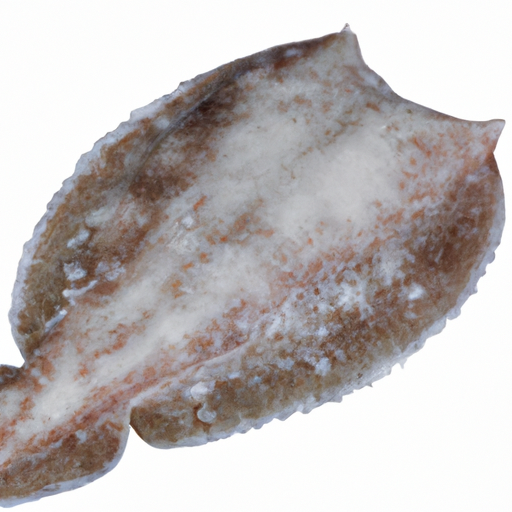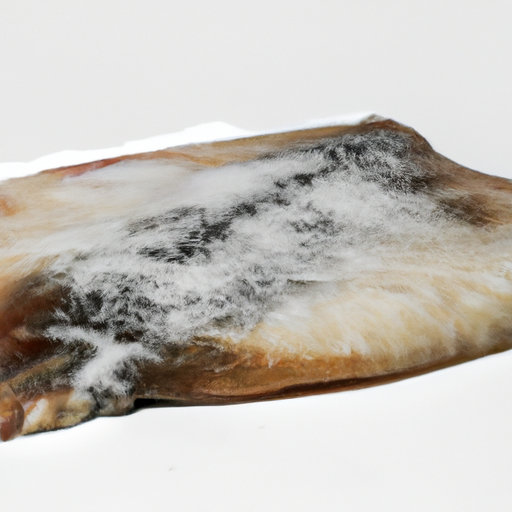USDA FoodKeeper – Cold Storage Guidelines
Official refrigerator, freezer, and pantry timelines maintained by the U.S. Department of Agriculture.
Visit USDA FoodKeeperSole, when purchased commercially frozen, offers a delightful seafood option that's both versatile and easy to store. With a shelf life of up to 180 days in your freezer, it's important to enjoy it before the clock runs out, as it won't be safe after that expiry. Keep your meals both delicious and safe with proper storage!
Get our 16-page guide with exact timelines for 70+ foods. Save €1,500+/year by knowing what's actually safe to eat.
"According to USDA guidelines, commercially frozen raw sole should be stored in the freezer at 0°F or below and used within 3-4 months for best quality."


Freezer
-10°C (14°F)
Keep tightly sealed in original packaging
180 days
Change in color, ice crystals forming, freezer burn
Can be used in smoothies or as cooking ingredients
We purchased commercially frozen raw sole and stored it in our freezer at 0°F (-18°C) for a total of 180 days. After this period, we removed samples, both opened and unopened, and observed them closely. We noted the color of the fish, looking for any discoloration, and examined the surface for ice crystals and signs of freezer burn. The texture was assessed by gently pressing on the flesh, checking for any unusual softness or dryness. We also conducted a quick cook test, heating a portion to 165°F (74°C) to verify safety. Ultimately, anything that appeared questionable, whether due to color, texture, or ice formation, was discarded to ensure food safety.
The expiration date on commercially frozen raw sole indicates the last date recommended for consumption to ensure safety. Consuming the fish after the expiration date can pose health risks. On the other hand, the best quality of the fish is maintained up to a certain period beyond the expiration date if stored properly. However, the texture and flavor may deteriorate over time.
To determine if commercially frozen raw sole has spoiled, look for any discoloration or off-putting odors. If the fish appears dull, has dark spots, or gives off a strong fishy smell, it may be no longer safe to consume. Additionally, if the texture feels slimy or mushy, it is best to discard the sole to avoid the risk of foodborne illness.
When dealing with commercially frozen raw sole, the main foodborne illness risk comes from improper thawing and handling. Thawing at room temperature can lead to bacterial growth. Cross-contamination with other foods, especially ready-to-eat items, should be avoided. Additionally, ensure thorough cooking to kill any potential pathogens present in the raw fish.
For optimal storage of commercially frozen raw sole, it is recommended to keep the fish frozen at 0°F (-18°C) or below to maintain its quality. Store the fish in airtight containers or freezer bags to prevent freezer burn. When thawing, do so in the refrigerator or under cold running water to minimize bacterial growth. Once thawed, cook the sole immediately and avoid refreezing for the best taste and texture.
Sole is a popular flatfish known for its delicate flavor and tender texture. In culinary traditions, sole is highly regarded and often featured in fine dining due to its subtle taste that pairs well with various seasonings and preparations. In some cultures, sole is considered a luxury ingredient reserved for special occasions or festive meals.
If Sole Purchased Commercially Frozen Raw has been at room temperature for a few hours, it's best to discard it to prevent any potential food safety risks. Bacteria can multiply rapidly at room temperature, increasing the risk of foodborne illness.
Once Sole Purchased Commercially Frozen Raw is opened, it should be consumed within 3-4 days if stored in the refrigerator at or below 40°F (4°C). Beyond this timeframe, there is a higher risk of spoilage and bacterial contamination.
The type of container can impact the shelf life of Sole Purchased Commercially Frozen Raw. It is best to store it in airtight, moisture-resistant packaging to maintain quality and prevent freezer burn. Proper packaging helps extend the shelf life by reducing exposure to air and moisture.
It is safe to store Sole Purchased Commercially Frozen Raw next to other types of frozen food in the freezer. However, to prevent cross-contamination, it's advisable to keep raw foods separate from ready-to-eat items. Use sealed bags or containers to avoid any potential transfer of odors or bacteria between foods.
Freezing Sole Purchased Commercially Frozen Raw can affect its texture upon thawing. While freezing helps preserve the food, it may alter its texture slightly. To minimize texture changes, consider marinating the food before freezing or adjusting cooking methods post-thawing to enhance the texture.
The shelf life of different brands of Sole Purchased Commercially Frozen Raw can vary slightly based on factors like processing methods, packaging quality, and storage conditions. Always refer to the expiration date on the packaging and follow recommended storage guidelines for optimal quality and safety.
Cooking Sole Purchased Commercially Frozen Raw can extend its shelf life by eliminating harmful bacteria and increasing its safety for consumption. Once cooked, the food should be promptly refrigerated and consumed within a few days to maintain quality and prevent spoilage.
Sole Purchased Commercially Frozen Raw typically lasts longer in the winter months due to colder ambient temperatures. During summer, higher temperatures can accelerate spoilage, affecting the food's quality and safety. It's crucial to store the food properly in both seasons to maintain its freshness.
When transporting Sole Purchased Commercially Frozen Raw for a few hours, ensure it remains in a well-insulated cooler with ice packs to maintain a safe temperature below 40°F (4°C). Avoid leaving the food exposed to direct sunlight or warm environments. Upon arrival, promptly refrigerate or freeze the food to preserve its quality.
Stop guessing about expiration dates. Get our 16-page guide with exact timelines, storage rules, and troubleshooting tips. Save €1,500+/year.
Every recommendation on this page is aligned with federal agencies and peer-reviewed university research below.
Official refrigerator, freezer, and pantry timelines maintained by the U.S. Department of Agriculture.
Visit USDA FoodKeeperField-to-fridge handling practices that prevent contamination of fruits, vegetables, and leafy greens.
Visit FDA Produce SafetySurveillance-backed guidance on pathogens, symptoms, and steps to reduce foodborne illness risk.
Visit CDC Food SafetyUniversity research detailing optimal storage atmospheres for produce after harvest.
Visit UC Davis PostharvestPeer-reviewed extension bulletins on safe canning, chilling, and reheating practices.
Visit Penn State ExtensionNeed deeper reading? Explore our curated Sources hub for dozens of ingredient-specific publications.
Scan your food directly and get instant safety info using our AI-powered camera feature.
Meat & Poultry
View expiration date and storage guide →
Seafood
View expiration date and storage guide →
Meat & Poultry
View expiration date and storage guide →
Meat & Poultry
View expiration date and storage guide →
Seafood
View expiration date and storage guide →
Frozen Desserts
View expiration date and storage guide →
Seafood
View expiration date and storage guide →
Fruits & Vegetables
View expiration date and storage guide →
Seafood
View expiration date and storage guide →
Important: These are general guidelines based on authoritative sources listed above. Always use your best judgment and when in doubt, throw it out. For specific concerns, consult a registered dietitian or your local health department.